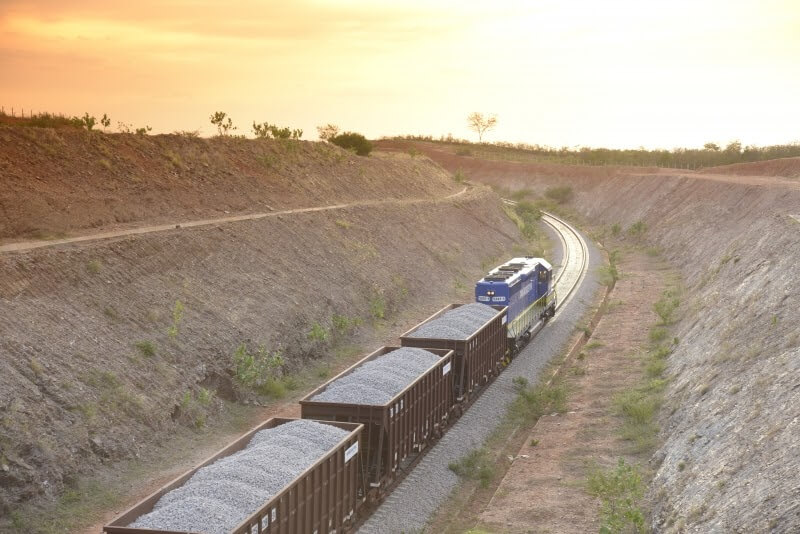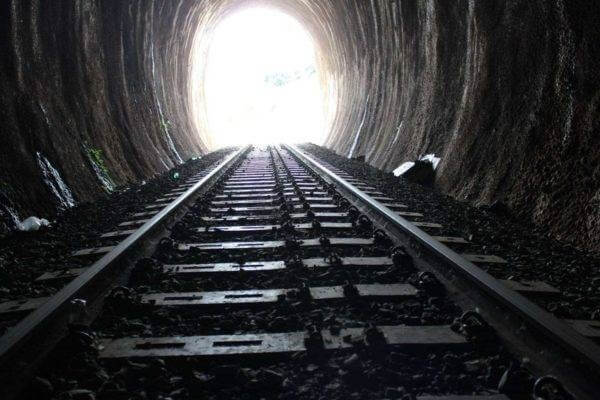
Rail transport in Brazil: advantages and disadvantages
Cargo transportation through the railway network has increased year after year in Brazil since 1996, when the railways were granted to the private sector. With that, the question arises about rail transport in Brazil, advantages and disadvantages and how it can help in the flow of Brazilian production, whether for the domestic or foreign market.
Currently, around 75% of the goods produced on Brazilian soil are still transported by the road network, while only 5.4% circulate on the railways. Even so, it is possible to notice an increase in the use of the Brazilian railway network in recent decades. From 1997 to 2018, according to data from ANTF (National Association of Railway Transporters), there was an increase of 125% in the number of cargo transport.
In addition, there was also a large private investment in this sector during this period, with a total value of 107 billion, if updated for 2018 based on the IPCA. Faced with this scenario, read on and learn about rail transport in Brazil, advantages and disadvantages.
Content Index
Railways Advantages

Little explored in Brazil, the railroads manage to aggregate in several aspects when we think about the transportation of loads in large quantities and over long distances. This is an extremely important aspect for a country like ours, which presents proportions of a continent. So, here are the advantages of the railways:
Increased competitiveness

How many tons can a truck transport at one time? A little over 70 tons if we consider an Extra Heavy vehicle with its maximum limit of 9 axles. Thus, even considering the largest trucks available, they do not reach the basic capacity of just one freight transport wagon.
The more modern lines that are being developed and implemented on the railroads can support up to 30 tons per axle, making the more resistant wagons, depending on the load, transport 120 tons at once. In any case, some lines allow a circulation of only 20 tons per axle, limiting transport to 80 tons per wagon.
Understand that the values mentioned are for only one car, and can be multiplied with the use of more cars. Thus, it saves time in transportation, since it is not necessary to make a journey several times and also reduces the cost of freight, since with only one freight train it is possible to transport thousands of tons, without the need for several trucks.
Decreased logistical bottleneck
The flow of production, whether for the international market or for domestic consumption, can be considered one of the biggest limitations of Brazilian transport. However, rail transport in Brazil with advantages and disadvantages presents itself as a good alternative to solve this problem.
High-volume, low-cost transportation ends up decreasing expenses and making the profitability of producers, whether industrial or agricultural, higher. In addition, traffic and poor road maintenance are also not dealt with, as in road transport, increasing transport speed.
Greater protection of transported cargo

Safety is a factor to be considered when dealing with rail transport in Brazil. In this case, the cargoes transported by the railroads are safer than in comparison with the materials transported by the highways, presenting a much lower percentage of thefts or accidents.
Accidents are also less common in this mode. This is because, in general, the wagons are heavy before any transport, preventing possible derailments and tipping, for example. To know more about the weighing of the wagons and their importance, just click here.
Economical and fast

As mentioned earlier, rail transport has a low transport cost compared to highways, for example. This decrease occurs because energy consumption in this mode is small for each of the loads that are transported.
In addition, there are modalities of this mode of transport that allow fast journeys, such as high-speed trains. This possibility is extremely important for short-distance transport, for example, which requires cargo to be delivered as quickly as possible.
Less environmental impact

Another advantage of rail transport is related to the environment and the impact of the modal on the ecosystem issue. Locomotion on railways reduces the environmental impact by consuming less resources and being less polluting when compared to transport by other modes.
This aspect is extremely important for any sector, since environmental factors are capable of affecting production, whether industrial or agricultural.
Disadvantages of railways

Even with several benefits, rail transport also has some disadvantages that should be mentioned. Therefore, see below a list of these aspects:
- Fixed routes - Contrary to what happens on the highways, you cannot improvise a route through the railways to reach your final destination, having to follow the same route. Thus, in the event of an incident involving the railway, for example, it is impossible to continue the transportation. In addition, the fixed routes require that the loading and unloading of materials or passengers must always be in the same places, which in case of any type of problem can also make locomotion unfeasible.
- Assistance from other modes - In addition to the fact that it has fixed routes, there is also the fact that rail transport in Brazil sometimes needs another mode to deliver the cargo to the final recipient. This is because in several locations the railway infrastructure does not arrive at certain points, causing the transport to be completed by the highways, for example.
- Lack of state investment - Despite the Federal Government's recent initiative to direct resources to the railroads,the history of this modal in the country shows that this is not the case normally. Since the 1950s, rail transport in Brazil advantages and disadvantages have been neglected in relation to the development of the road modal, causing delays and abandonment on several rail lines
Conclusion de transporte ferroviário no brasil vantagens e desvantagens
In general, when dealing with rail transportation in Brazil, advantages and disadvantages, we realized that with the proper investment, this modal can become the main transportation matrix in the country, adding quality and safety in transportation. To learn more about rail transport, just click here and follow our blog.












